The blocks are getting harder, and the heat is definitely on. In this installment of “The Farmer’s Wife Saga” I am going to show my two blocks for this week. I am also going to talk a little bit about my process. Then I will share my thoughts for the future of this quilt.
#14 Betty
Betty is made with the following Kona solids: Artichoke, Thistle, and Peridot.
#20 Caroline
Caroline is made with the follow Kona solids: Bright Periwinkle, Wisteria, and Cabbage.
Caroline from Behind
I share a photo of Caroline from the back side to begin the discussion of my process. This photo illustrates the complexity of Caroline. Get a load of all of those tails, especially those converging at the center of the block, and also at the centers of the two pinwheels which make up the upper right and lower left of the block.
Caroline is the first block composed entirely of triangles. This proved to be a challenge in terms of basting and matching up points at the center of the three locations mentioned above.
Here are a few things I was aware of as I worked on the triangles that make up Caroline:
Placing pins along the diagonal edge and placing the head of the pin to the right made it easiest for me to baste because the head of the pin was as far away as possible from my starting point.
I found it prudent to begin basting triangles at the 90 degree angle corner of the triangle to give myself a good start before tackling the corners that would produce the tails.
I was able to remove the pin on the smaller triangles after making only one additional basting stitch along the first side of the triangle. With the larger triangles I waited until I turned the first sharp corner to remove my pin.
I am still a little bit unsure about which side of the triangle fabric I should be placing uppermost when turning those acute angles.
I found the small red Clover clips to be very useful in holding the edges together when joining my pieces, especially for matching seams. (The above photo shows this process with Aunt, as I had not documented it with Caroline.) That is my lap by the way… one of my favorite photo staging areas for fine details.
Speaking of deTAILS, let’s talk about tails…
Man, they do stick up.
I could not imagine that I could tame this beast… the beast with eight tails.
I thought of clipping the tails, but somehow that seemed unnecessarily cruel, and somehow not right, as well as fraught with possibilities for regret if it did not go well. If you EPP, how do you deal with your tails?
Well, I finally decided to pay attention to one tail at a time and try to flatten each out in relation to the tail nearest it, and eventually I got them to nest. Then the application of some heat managed to put those tails in their places as flat as they could go. I am wondering if I should do a tiny bit of tacking with thread to keep them in place.
I think the points match up rather well considering how hard it is to see what you are doing with all of those tails wagging in your face when you do the stitching at the the intersection of all eight pieces.
I didn’t get out a timer for these blocks, but my best guess is that Betty clocked in at about three hours, and Caroline may have taken as many as five hours. Let’s not even talk about the time spent documenting and blogging because that doesn’t count. I do that because I must.
I have been paper piecing hexagons now for about two and a half years. In eight hours of time I imagine that I would have been able to cut, baste and assemble enough hexagons to cover ten times the area that these two little squares will cover, but that isn’t really the point. The issue is, do I want to continue spending my time this way, when there might be a better way to do this? Perhaps there is a more appropriate way to complete this project. At the risk of seeming shallow, I have to admit that part of my conflict comes not only from the amount of time this project will consume, but also from knowing that there is going to be nothing about the appearance of the finished product that will suggest that it was hand pieced. It will look like a machine pieced quilt. There is something about hexagons that say, to at least the experienced quilter, “I was hand pieced.” You can hear that declaration from twenty feet away. I like that.
I definitely want to continue with the QAL, but perhaps I should look at this as an opportunity to learn something new. Maybe I should be buying the Marti Mitchell templates and trying traditional hand piecing. It would be another way of relaxing with hand stitching. There is a lot of excitement for the templates in the QAL Facebook group discussion. I imagine that hand piecing with the templates would be faster than the EPP approach I am taking. Perhaps I should consider learning to do Foundation Paper Piecing. As much as it would tie me to the machine, which I hate, it would provide me with a new skill.
It is worth noting that my finished blocks are measuring slightly larger than the prescribed finished length. This error is between 1/16 of an inch and 1/8th of an inch. Luckily it is consistent. But I should take it into account when I go about finishing the quilt.
One of the things I worry about a little bit is how I am going to finish this quilt with sashing. I have pretty much rejected the idea of engineering my squares so I can recover the quarter inch seam allowance. It is something I don’t want to worry about as I baste. Plus if I am going to do the blocks with EPP, I want to EPP it all. I am considering drafting a sashing with a variety of gray fabrics that are light in value. I’ve done a few sketches, but if I go this route I am likely to drag out the old school drafting tools and draw out a portion of the sashing to scale. I may even “hide” some hexagons in the sashing to “prove” that the work is EPP.
In most likelihood I will continue with EPP at least until I have completed enough blocks to do a sample with EPP sashing.
Stay tuned.
I’d like to hear from you. If you are doing the Farmer’s Wife with EPP, how is it going for you? What challenges have you encountered? Do you have any plans for sashing?
I am joining in the fun of The Farmer’s Wife Link Party over at Gnome Angel. Thank you Angie Wilson for giving us the opportunity to share our blogs in this way.
I am also linking up with Jessica’s Monday Morning Star Count over at Life Under Quilts.
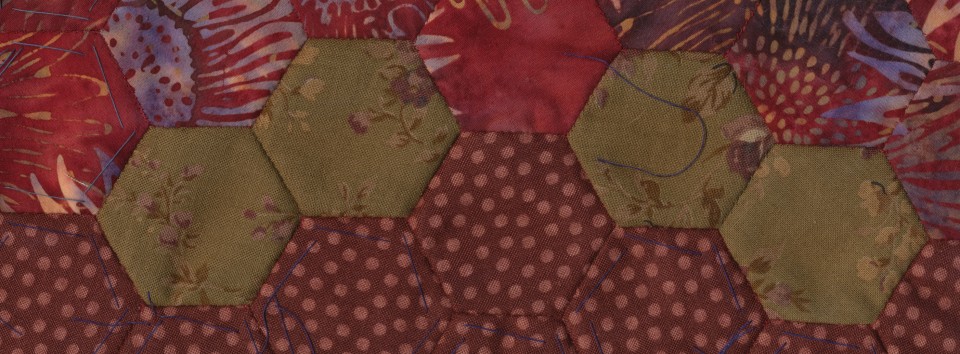


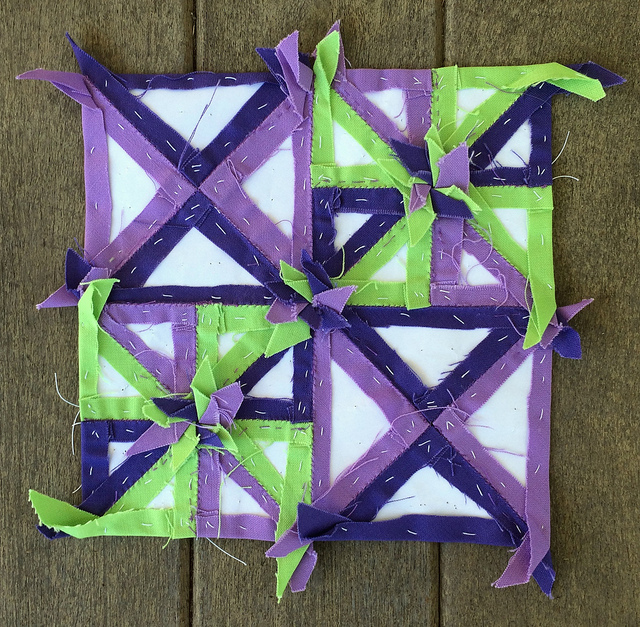
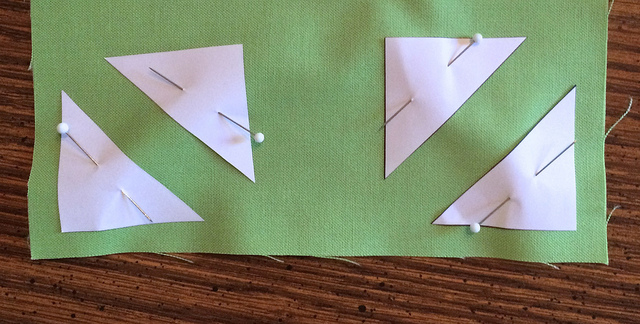



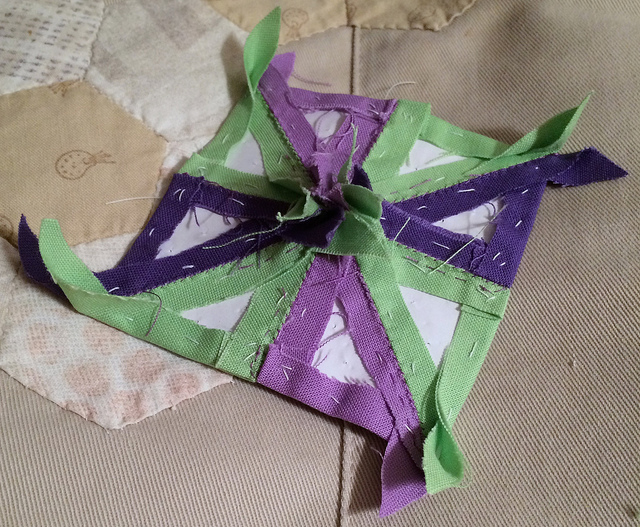
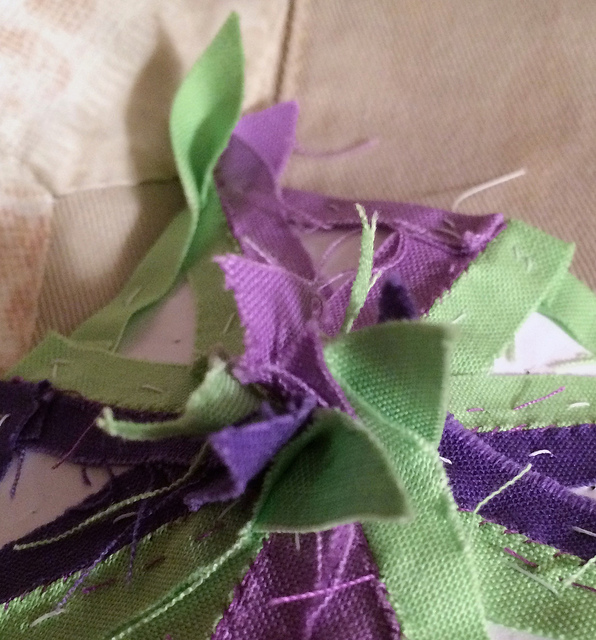
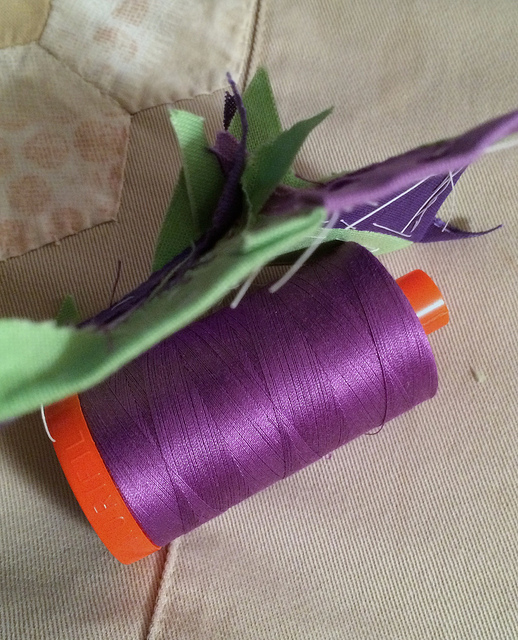

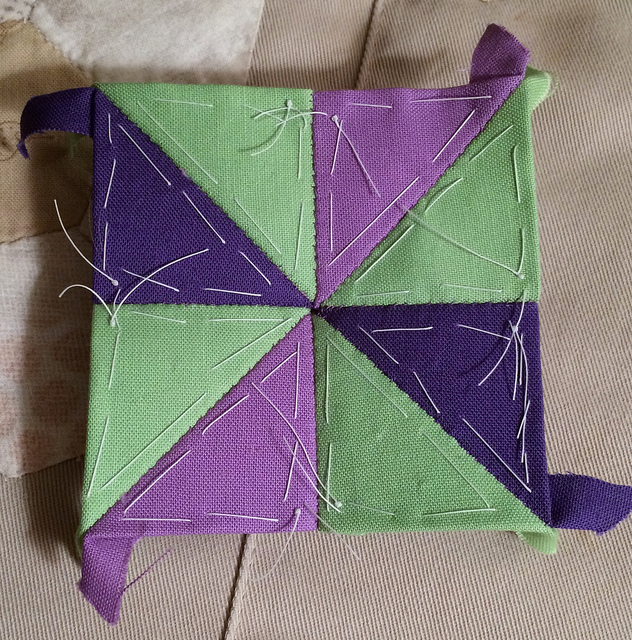
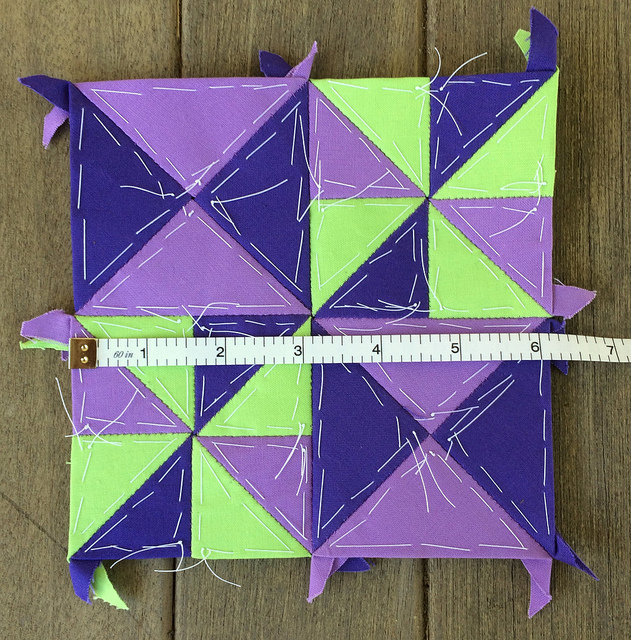
So interesting to read that you are considering not doing EPP for these blocks. I’m just the opposite! I have never tried EPP so I’m considering having a go – at least on some of the blocks. So far I’ve only been able to do the first two and I rotary cut and machine pieced them but I’m hoping to tackle Betty and Caroline later today. Now I’m wondering which way will be best for me?
Thanks for sharing your thoughts for an inexperienced EPP’er like me!
Well, Tonya, I am more than likely to continue with the EPP for this quilt, even though I have had my doubts.
I would never discourage anyone from doing EPP. I highly recommend it. However, these blocks might not be the best way to begin your EPP journey. I would recommend that if you want to do some of these blocks with EPP that you first try doing a little bit of EPP work with one inch hexagons. If you like doing that, THEN consider doing the block called Patience with EPP, which is the easiest block in the book. If you enjoy that and want more, you can move on from there.
Those tails!!!! Thank you for the heads up that I have them to deal with in the future.
I’m sewing my blocks with my machine. In terms of sashing I am thinking black or white will be the winning colour.
Yes. We must tame the tails. I may do a second quilt by machine too. I have been totally floored about how amazing this QAL is as a “classroom”. Good idea to go with a neutral for sashing.
I’m really enjoying reading about this as an EPP project, but I know it will be fun no matter which way you decide to continue sewing.
You will probably get to continue to read about it as an EPP project. My gut feeling is that momentum will keep me on the EPP path. Plus there is the principle of the thing. I DID say that I would do it, and I generally do what I say I will.
I think they look great and are worth the time and effort to EPP. I ran into a similar issue recently making a Dear Jane block with EPP. I think the turn of the fabric adds just a slight bit of extra fabric and when multiplied by all those pieces, makes the finished block larger. Next block I’m going to try cutting my templates just inside the line to see if that helps keep the block size accurate. BTW, i love your Kona colors, the cool blues, greens and purples are my favorites!
If you’re keen to complete this project I would go with traditional hand piecing rather than EPP. As it does take so much longer. I haven’t tried hand piecing yet, but I have a few friends who have and they love it because it is so relaxing and faster than EPP. Your blocks look great and I love the colours you are using.
I think that I am going to finish it with EPP, but I also think that before long I will decide to purchase some the Marti Mitchell templates and do some blocks with traditional hand piecing as you are suggesting. I have some Kaffe Fasset prints that might be nice to hand piece with. Thank you for the suggestion. I am learning so much from everyone in this QAL.
Terri I got lucky and found out, when first starting EPP, that the way to make your tails lay nice on the back side. The tutorial I read was for 60 degree diamond paper piecing, which is what I was making. Since these diamonds come together with six points together it was/is really crucial to deal with the tails issue from the get-go! The tutorial said to always fold your points/tails in the same direction. ie your first 90 degree fold above I see you brought the next edge of fabric back toward you instead of folding away from you: I call this folding clockwise, and it happens to be the direction I fold mine too. either clockwise or counterclockwise is fine so long as you are always consistent! if you are, the tails at a 6-point intersection lay down in a nice little rosette of tails on the back. ps love that you’re doing farmers wife, I really enjoy watching your work.
Thank you! Thank you! Thank you!
This is exactly the type of information I was hoping someone would offer me. I knew I had to be basting those triangles incorrectly. This will be an incredible help moving forward.
Now I should find a block laden with triangles and give this technique a try.
Hey Terri, great to see a post about EPP and FW. How is it coming along? I am a big fan of EPP and hand sewing but have found foundation piecing to be a new interest (I usually prefer hand work to machine work). If u r organised and cut ur pieces of fabric first and then sew it up and finger press it (rather than iron it constantly), it takes no time on the machine. Please post more piccies of ur EPP FW. Vanessa